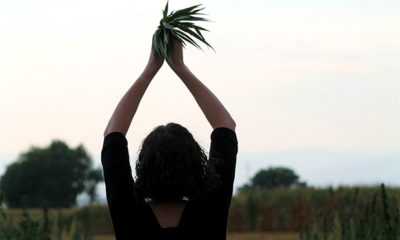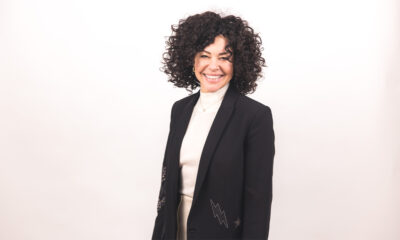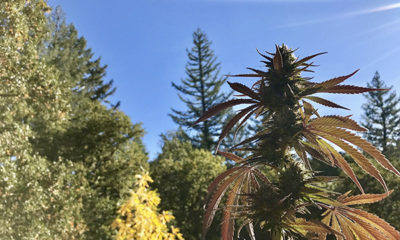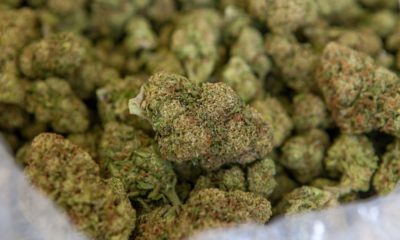
Joint Opinions
‘Women In Weed’ Is Nothing Special
Lately, there has been a lot of specialized coverage of “Women in Weed.” Most cannabis-centric publications have put out special women-themed issues or featured lists ranking top female activists or businesspeople.
It wasn’t too long ago the concept of women using, growing or selling cannabis was not only taboo but also completely shunned by mainstream society. Of course, with women making up half the global population, it should come as no surprise that of the nearly half of the Americans who admit to trying cannabis at some point in their lives, 35 percent are female. Women already exist in the cannabis world and always have.
The blame for public perception is varied, but much of it lies on the media and the industry itself. A lot of it is in how women are being covered in the media for their cannabis use. These days, the mainstream media has been painting a much fuller picture of women’s involvement in cannabis, and more women have been coming out because of it. Today, when the phrase “Women in Weed” comes up, it should evoke the mothers who line the halls of their state capitals fighting to legalize medicine for their children or the successful business owner in a new up and coming industry. But, the media coverage would have you think it’s all about flashy events, lifestyle and fashion and that women just showed up to the party.
As cannabis use started regaining some cultural acceptance in the United States in the mid-20th century, white men were traditionally the most likely to openly admit their use, write about cannabis or publicly advocate for it.
The stereotypical stoner has always been one of two things; the 18-24 year old privileged white male or the demonized drug addict, most often a person of color or other marginalized group. Perceptions dictate personal outcomes, and historically when white men are outed for using marijuana they still retain the capacity in the public eye to serve as President of the United States. For marginalized groups — women, people of color, different genders, religions, the poor or disabled — being outed for using marijuana is more likely than for a white male to come with devastating consequences such abusive run ins with law enforcement, a justice system stacked against them, incarceration, child removal and job or home instability. This, of course, devastates whole communities everywhere around the world.
But this is changing in some parts of the country. While the threat of child removal is still very real in all states, women — along with all people — are taking advantage of participating in the fastest growing industry in the nation. As the laws change and the era of legalization and commerce arises, women are gaining mainstream acceptance and being featured at events and in publications more, but at what point does the coverage cross the line from inclusion to pandering?
When women are highlighted in the media solely because they are female, as part of special women-only profiles or — most egregiously — ranked on a list of top women leaders within an activist movement or industry, they aren’t truly being represented, they are being commodified. For some reason editors and marketers across the country are scratching their heads about how to make media more diverse. Many want to appeal to the massive consumer buying power of women, especially in the billion dollar and rapidly growing cannabis industry.
Instead of trying to figure out how to appeal to other people, include them. There are women, people of color and different genders doing pretty much everything all over the world, but as marginalized people the risks are far greater in admitting cannabis use. If more media outlets had more diverse pools of writers they would more adequately cover issues relevant to all cannabis users — not just white men. The issues of women and other marginalized groups are everyone’s issues, they aren’t specialty issues and they deserve to be covered as part of the mainstream just like white men’s issues.
On the Nightly Show with Larry Wilmore, TV writer and producer Shonda Rhimes lamented that although she is the most successful television writer in a generation—the last person to “own a night of television” was Aaron Spelling in the 1970s — she is frustrated that most of her interviews focus on her being Black and female, as if it is somehow special that she could be capable of her talent despite these things. She said she often avoided interviews, not just because she is an introvert, but also because she was tired about being featured as “first-only-different” rather than simply being recognized as a master of her craft.
Similarly, the media is to blame for the perception that women are a new “trend” in cannabis rather than a reality of it. Women already grow marijuana, sell it, own businesses and advocate for the laws around it to change. They just need to be included as if they are part of the whole, featured for what they are doing not their physical anatomy.
It’s important for the concept of women and cannabis to mainstream. The more acceptable it becomes the greater benefit there is to society at large. So many people could benefit from using cannabis as an alternative to some more dangerous medical treatments, and naturally many of them are women. By allowing women or other marginalized people the societal comfort to determine if cannabis is right for them in their lives we create a freer society. We affirm that we believe in the American freedom of principles and the right of a human being to determine autonomy over the substances they put into their own bodies — for whatever reason they choose and whatever the outcomes may be.
Media perception of women in cannabis matters and if women are simply featured as socialites, models or special features they are forced to compete against one another for recognition. So while all the “Women in Weed” hype is great for visibility, it does nothing to address real women’s issues surrounding cannabis.
What do you think? Are women’s issues surrounding cannabis being addressed by the media? Tell us in the comments below.
























